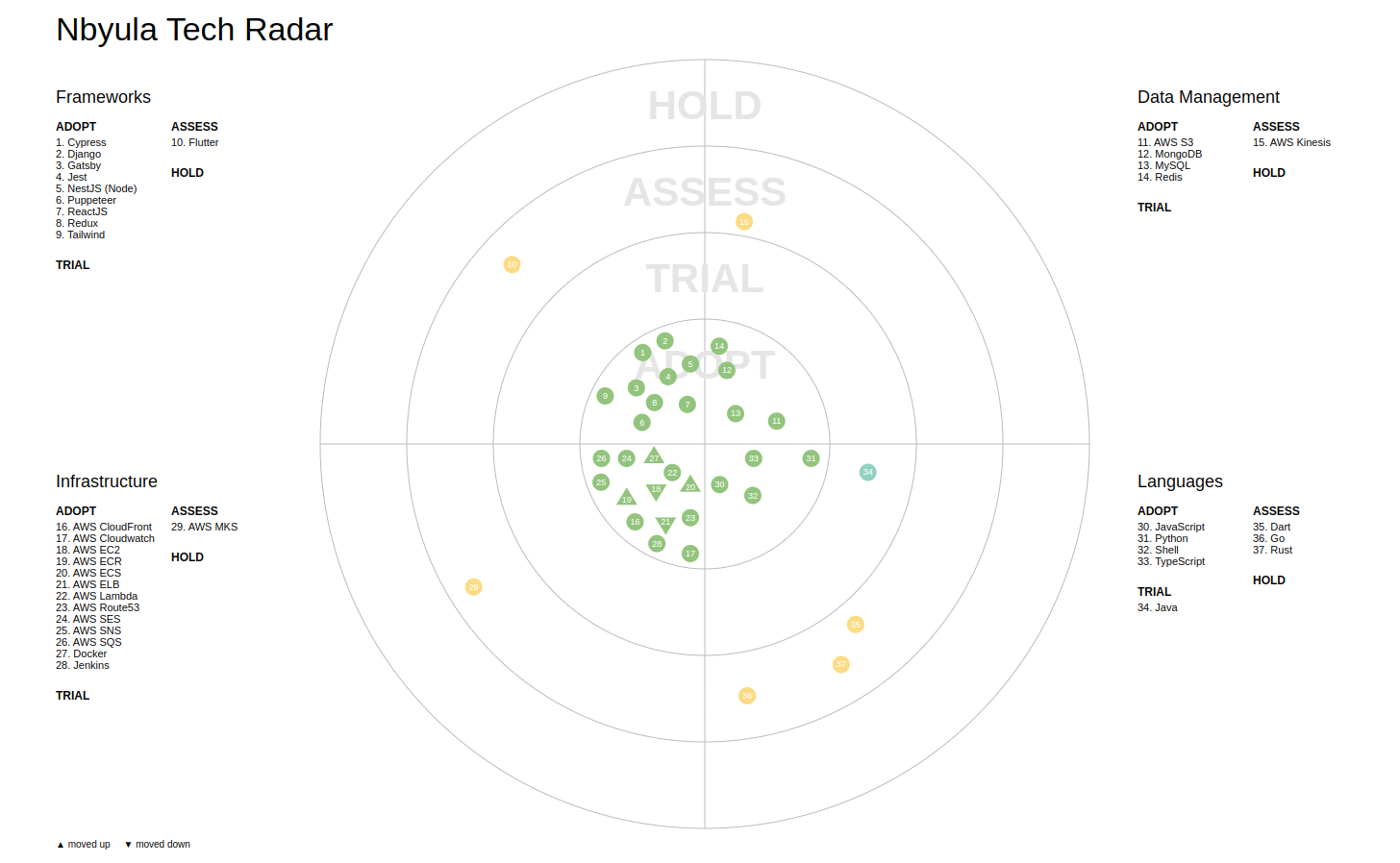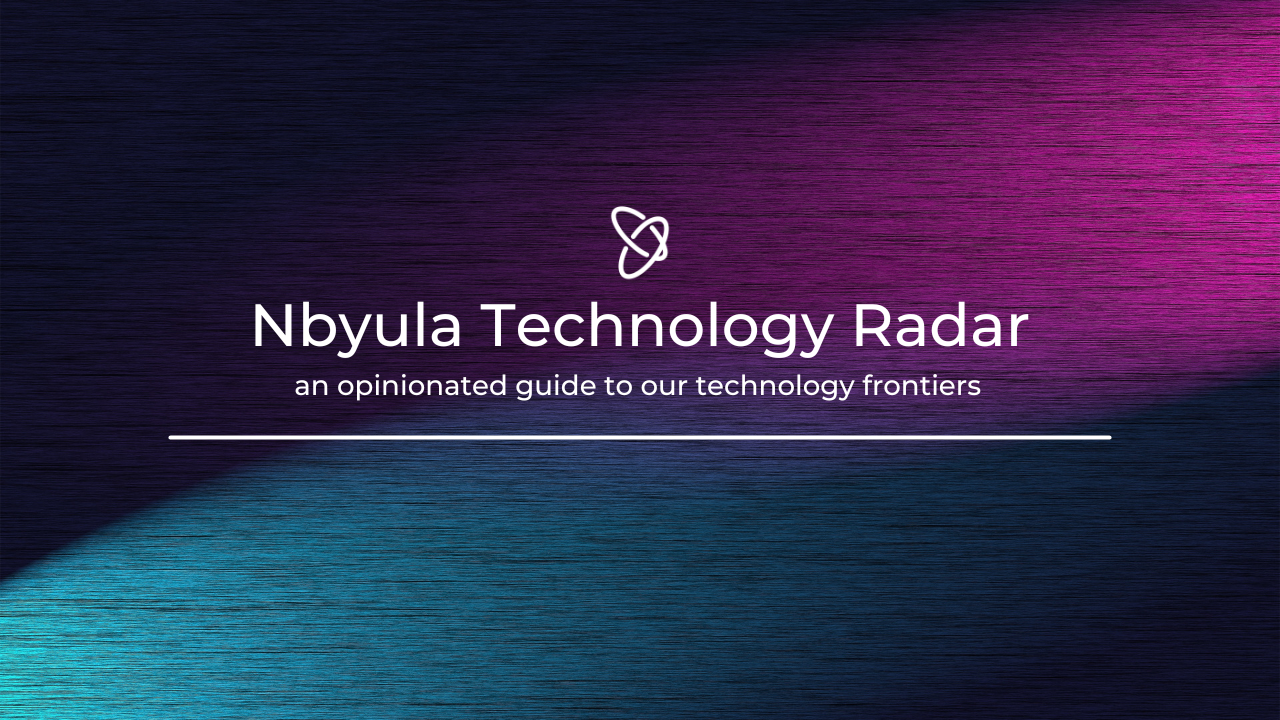The Nbyula engineering teams use the Tech Radar as a tool to help them choose the finest technology for new projects.
It offers a platform for exchanging technological expertise and knowledge, for thinking critically about technological choices, and for the ongoing evolution of our technological environment.
And it can directly be accessed at https://codepen.io/nbyula/full/gOKKNYX

We utilise Tech Radar to explain the technology we use to future Terraformer. We made the decision to make our tech stack public after being asked “Which technologies do you use?” during interviews quite a bit.
- ADOPT — Technologies that have a history of use in the Nbyula production setting, are low risk, and are advised for wide adoption.
- TRIAL — Technologies that have been successfully used in projects to address real issues; initial, rigorous usage that demonstrates advantages and may reveal drawbacks.
- ASSESS — Technologies that show promise and have a clear potential to benefit us; technologies in which it would be worthwhile to devote some time in study and prototype in order to evaluate impact.
- HOLD — New projects shouldn’t employ the following technologies. Technologies that, in our opinion, are not yet worth investing in further. While HOLD technologies shouldn’t be used for brand-new projects, they may typically still be employed for ongoing initiatives.
Categories
Our tech stack has been segregated under 4 different categories:
- Infrastructure
- Data Management
- Frameworks
- Languages
Infrastructure
We extensively use AWS (Amazon Web Services) for hosting our cloud infrastructure. We also try to benefit from other cloud services such as Google Cloud Platform and local cloud providers such as E2E Networks where ever possible. In addition to using cloud service providers, we also maintain and host variety of internal apps from our own on premise servers.
Data Management
Depending on the type of data and the requirements of the project, teams at Nbyula stores its data in several locations. We employ Redis for caching. Our own self-maintained fleet of EC2 instances offers relational data that is housed in MySQL database instances. There are many different usage scenarios for MongoDB in Nbyula, which is used extensively for majority of the apps.
Frameworks
The most prominent framework we use for front-end development is ReactJS, while Nest.js is in use, primarily for back-end functions.
The sole trial item in the Frameworks category, Flutter, is perhaps the one that draws the most attention. We have been experimenting with Flutter for a while now to assess potential use-cases within the Nbyula mobile apps. We’re currently making decisions, but we’re prepared to devote additional resources to this front in the future.
Languages
The programming languages that Nbyula has examined are included in the Languages category. There is a particular use case for each language included in the radar. Python, for instance, is frequently used by data engineers and teams engaged in continuous integration, web scraping, and recommendation systems. The majority of our content-delivery components are built in Typescript, which is also one of the languages used most frequently in the back-end services of Nbyula. Contrarily, JavaScript is employed for both front-end and back-end applications, depending on the nature of the project and the experience of the respective team.
Closing Words
I made an effort to provide a thorough review of the technological options at Nbyula in this post. Nbyula is a dynamic organisation, so the decisions described here are subject to change. Please remember to check our TechRadar for the most accurate picture.
This is how TechRadar worked for us. Please feel free to leave a comment if you’d like to share your knowledge of related tools and technologies, and let us know if this article or TechRadar was useful to you when submitting your resume!
Special Mentions:
This is inspired on the pioneering work by Thoughtworks


Leave a Reply